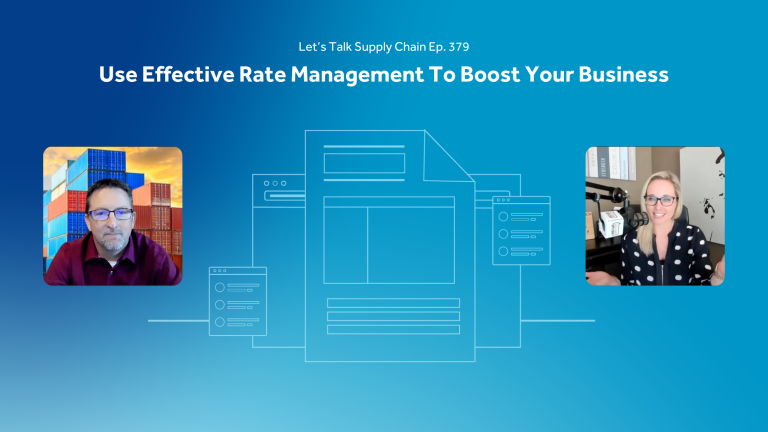In the past, diesel gas was the only option for fueling a big rig. Thanks to modern technologies, however, truckers may soon have another option: electric trucks. While battery-powered commercial trucks are not yet widely available, companies such as Tesla are coming close to a big debut. As electric trucks hit the market, trucking companies and owner-operators are wondering – which type has the best total cost of ownership (TCO)?
Truck makers are planning to launch electric models by 2020. Electric trucks aim to provide the same performance as diesel-fueled models, with the added advantages of lesser fuel costs and emissions. With proposed prices of around $150,000[1], however, it can be difficult to weigh the TCO of an electric truck with a traditional diesel version. Here we take an in-depth look at the predicted TCO of electric trucks and compare them to the total costs of ownership for diesel trucks, to help those in the industry make smart future fleet decisions.
What Is Total Cost of Ownership?
Total cost of ownership, or TCO, is a financial estimate that helps owners determine the costs of a product or system. TCO provides a way to determine the total economic value of an investment. This allows owners to calculate returns on investment (ROI), internal rate of return, and economic value added. Calculating TCO takes looking at the total cost of item acquisition and lifetime operating costs, as well as what it will cost to replace or upgrade the item at the end of its lifespan.
TCO is an important part of the trucking industry. The total cost of ownership is a figure owner-operators need to know to conduct business. Calculating TCO gives a truck owner the ability to determine if a truck is a good investment, whether the company can afford to add to its fleet, and how much money to allot toward vehicle maintenance. Understanding TCO is vital to the success of the business. Otherwise, the trucking owner or company would not be able to make smart, data-backed business decisions.
Fleet management costs are increasing. A 2016 study of 3,000 fleet owners[2] proved this fact by comparing TCOs in 2016 vs. 2012. Stricter regulations, advanced technologies, and emissions mandates are contributing to the total costs of ownership for fleet managers. These costs will continue to increase for the foreseeable future. Combine this with the continuous driver shortage and many fleet managers are searching for ways to lower their future costs. Purchasing an electric truck may be a solution.
Breaking Down TCO in Trucking
In the transportation industry, the total cost of ownership is a calculation that helps trucking companies determine the complete costs of owning and operating a truck. TCO looks at both direct and indirect expenses relating to the truck during its useful life. A TCO analysis examines not only the price of the truck, but also its long-term costs over time. The analysis may consider the following variables:
- Initial cost to purchase or lease the truck
- Routine truck maintenance
- Years of vehicle repairs and part replacement
- North Equipment costs
- Value of the truck when it’s time to sell
- Price of fuel
- Mileage per gallon
Calculating all the expenses related to purchasing and maintaining the truck per year will give you an annual cost of ownership. Dividing that by the number of miles the truck will drive will give you cost per mile. The average total cost of owning and maintaining a big rig is around $185,000 or more per year. Most of these costs are vehicle-based, while around one third pays the driver. The TCO of a traditional diesel truck will depend on the price of diesel fuel for the year. These prices fluctuate regularly.
TCO of an Electric Commercial Truck
One would calculate the total cost of owning an electric truck the same way as a diesel truck. However, there are many unknown factors involved, since electric transportation is a new industry. Calculating the TCO of an electric rig depends on facts released by the companies manufacturing the trucks. In a 2017 announcement[3] from Tesla, for example, the company’s Chief Executive Officer (CEO), Elon Musk, stated that its electric truck would be able to travel 500 miles per single battery charge and cost less to operate than diesel trucks.
Elon Musk stated the truck would cost around $1.26 per mile to operate. Compare that to the $1.51 per mile it takes to operate a traditional diesel truck, and operators are saving $0.25 per mile by going electric. However, many unknown factors[4] can change the average TCO of an electric truck. Vehicle life, residual vehicle value, recycling or salvaging the vehicle, battery issues, battery life, zero-emission regulations, and power problems are all examples of factors that can be difficult to predict. It is impossible to accurately gauge TCO, since electric semi-trucks are brand new to the world.
Using the Dana Costs of Ownership Calculator
In February 2019, Dana Incorporated announced its launch of a TCO calculator[5] to compare diesel and electric powertrain solutions. Dana Incorporated is a leader in performance and efficiency solutions for powered vehicles. The calculator can help owners easily compare the TCO between diesel and electric trucks. You can customize your fleet specifications and easily compare the estimated TCO between both options. Although the electric truck TCO amount is just a prediction, it can give buyers a good idea as to what to expect. Here’s how to use Dana’s tool:
- Select whether you want to analyze the TCO of a diesel or electric vehicle. Choose diesel first to begin the comparison. Then, choose the vehicle application: regional hauler, drayage, city delivery, etc.
- Customize your TCO information sheet. Select the vehicle’s average mileage per year, fuel costs, and miles per gallon. The tool will automatically calculate your annual cost of fuel as well as cost per mile.
- Fill out your truck equipment costs. Personalize the initial price of the vehicle, its amortization (how many years you plan on having the truck), and an estimated resale value at the end of life. Again, the calculator will do the math for you to give an annual cost and cost per mile.
- Add any other costs. The calculator then gives you the opportunity to add other costs, either per mile or annually. You can add the price of truck maintenance, insurance, taxes, and tolls.
- Receive the total cost of ownership amount. Once you have filled out all elements of the TCO calculator, you will receive the total cost to operate the truck per mile, as well as the total annual cost. Multiply this number by the size of your fleet for total costs.
To compare the price of your diesel truck with an electric model, you can either go back to the calculator’s home page and resubmit the information under the “Electric” category or use the tool’s built-in comparison feature. Simply press “Compare Electric Costs” at the bottom of the calculator page to immediately see a comparison based on the average TCO of an electric truck. You will receive a page that directly compares the total annual cost and total cost per mile of a diesel vehicle vs. an electric vehicle. If you wish to modify the values of the electric vehicle, you can select this option and make your customizations.
How to Reduce the Costs of Ownership
Learning how to reduce the costs of ownership – no matter what type of truck you own – is important to your bottom line. Over the years, fleet managers have found ways to cut costs and increase overall profitability. Reducing costs is important if you wish to profit at all from your trucking company, due to low margins in the industry. The average truck owner-operator works at just a 5% profit margin[6]. The other 95% of income will go toward covering the costs of ownership. Adding to your profit takes adding revenue, cutting costs, or a combination of both.
Cutting down your costs of ownership is one of the fastest ways to increase profitability. While you cannot control factors such as fuel costs, you may be able to lower your operating costs elsewhere. First, break down your fixed and variable costs. Your fixed costs you may not be able to change, such as paying employees and making insurance payments. Variable costs, however, may be more flexible. Variable expenses can include food, maintenance, and fuel. Categorizing your costs can help you see where to save.
You may think extending the service life of your truck will lower your overall TCO. After all, the longer your truck remains operable, the better returns you will receive for your investment. This, however, is a common misconception. Extending service life could actually cost you more money than it saves. You may face more expensive maintenance costs, lesser fuel economy, the risk of an expensive breakdown, and a negative impact on resale value. If the older truck causes an accident, you could also face liability and a hit to your reputation.
Search for ways to save money other than extending the lifespan of your vehicle. Keeping up with truck maintenance to avoid more costly repairs and vehicle breakdowns can save money, even if you don’t plan on extending the life of your fleet. Check truck insurance quotes from different providers regularly to see if you can save. Cut down on per diem meal costs by setting a budget and sticking to it. You may be able to shop cheaper or bring more meals from home to curb your food spending habits on the road. Spend more nights in your sleeper berth than in hotel rooms.
If you are really in a bind, reduce the size of your fleet. Selling some of your vehicles is a proven way to reduce your overall costs. You can save the TCO of each vehicle you sell. Keep in mind, however, that the TCO of your remaining trucks might increase because of the increased workload required of them. You may also be able to save money by decreasing miles traveled, modifying driver behaviors, purchasing used trucks, and taking care of your vehicles for better resale values. Keeping your TCO down can help you increase overall profitability.
Is an Electric Truck Right for You?
Today, fleet owners are using TCO as a major factor in determining whether electric trucks will be successful. While many factors remain unknown, predictions show that the total cost of owning an electric truck will be less than that of a diesel truck. Estimates place the difference at about $0.15-$0.25 per mile. Operating an electric truck will be cheaper over time, even with a larger initial vehicle investment, thanks to the savings seen on fuel. Other benefits of electric truck ownership may include:
- Fast charging times
- Can haul the same weight as diesel trucks
- No heavy components like a diesel truck (engine, transmissions, etc.)
- Battery capacities will increase over time with new technologies
- Tax breaks and grants available
- Less maintenance than a diesel truck
- Greater energy efficiency
- More responsive to the operator
- Safer than other semis – lower center of gravity
- Better technology to prevent and avoid collisions
- More comfortable interior designed specifically for the driver
- Built-in connectivity and high-tech features (at least with Tesla)
Electric trucks are better for the environment and may be better for your wallet as a fleet manager. They cost less to run and maintain than diesel versions, although they cost more to acquire. If you want to stay on the cutting edge of trucking industry technology as an owner-operator, reserving an electric truck might be the solution. Experts predict many safety, health, environmental, and security benefits surrounding electric trucks.
Cons of an Electric Truck
Deciding whether to purchase an electric truck takes weighing the pros against the cons. The main downside of this investment is the upfront costs. Purchasing an electric truck will cost about twice the amount of a traditional diesel truck. This large price difference has made many fleet owners wary about making the investment. It costs between $5,000 and $20,000 to reserve an electric Tesla Semi. Purchasing the limited founders series semi requires the full $200,000 up front. Production will begin this year, for public debut of the trucks in 2020. The cons of buying electric may include:
- Expensive initial acquisition costs
- A lot of unknown variables in determining TCO
- Not many charging stations available in the U.S.
- Installing chargers requires significant infrastructure updates at a site
- Can take hours to recharge
- Using air conditioning and other applications could cut the range of the electric vehicle
- Possibility of battery fires
- Raw materials required for electric vehicle production could cause price fluxes
- Climate can affect battery performance and range
- Unknown truck lifespans and resale/recycle values
An electric truck could be cheaper to run and maintain than a diesel truck. Overtime, these costs benefits could add up to make the electric truck a better investment. However, large upfront costs are preventing many fleet managers from making the purchase. CEO of Paccar, Inc., Ron Armstrong, believes there won’t be widespread demand[7] for electric trucks until they are more economically feasible. Major companies such as Wal-Mart, Anheuser-Busch, JB Hunt, Meijer, and the United Parcel Service (UPS) have already preordered electric trucks.
TCO and the Future of Commercial Electric Semi-Trucks
A great deal of debate surrounds electric trucks. The North American Council for Freight Efficiency[8] outlines the ten most common arguments for and against electric trucks. Some arguments supporting electric trucks include cheaper maintenance, proven technology, and predictions for charging solutions in the future. Arguments against electric trucks voice concerns about high acquisition costs, the lack of support from the electric grid, and not enough charging ports available. All in all, however, TCO will play a major role in whether owner-operators decide to make the investment.
Although the true TCO of operating an electric truck remains to be seen, studies and estimates predict a lower overall TCO for an electric truck compared to diesel. The fuel savings and lower maintenance expenses are the main contributors to the better TCO. This fact might be enough for many fleet managers to take the leap despite many other unknown factors. A lower TCO means better profitability for owner-operators and trucking companies. However, owners will have to take many other factors into consideration when making their decision.
In an economy that has grown more and more difficult for trucking, a solution that could lower TCO is attractive for fleets of all sizes. Electric trucks may resolve many of the current issues owner-operators and trucking companies face. Switching from diesel to electric may cut costs, improve safety, reduce crash rates, and help companies adapt to modern transportation technologies. Purchasing an electric truck may be a smart move for the future.
On the other hand, reports predict[9] electric trucks will remain just a small part of the market until at least the early 2020s. High prices, low initial demand, and an adjustment period may mean these vehicles don’t truly hit the roads until five or more years from now. This gives companies time to calculate and compare TCOs, save money, and create a strategy for the future. The electrification of the transportation industry is inevitable, but no one can say the same for how widespread electric trucks will become. Keep your eye on this major trend as the first electric semi-trucks for consumers hit the market next year.




